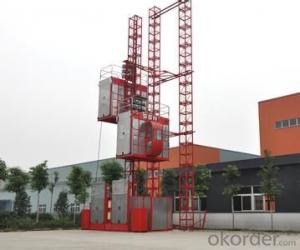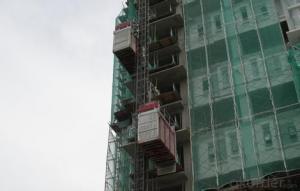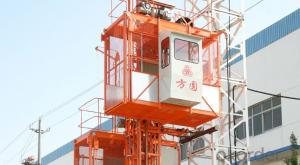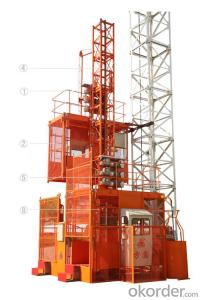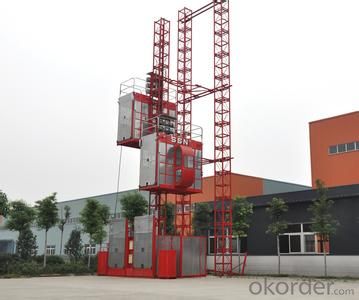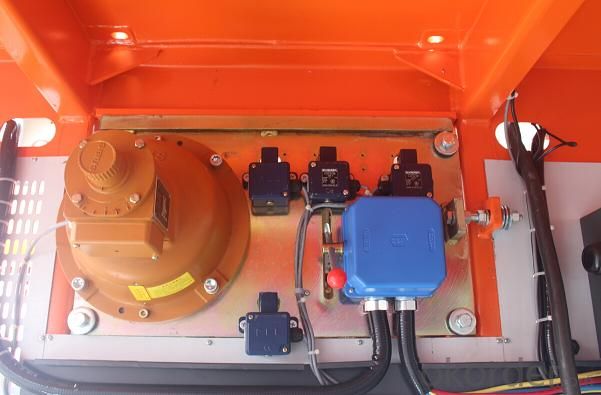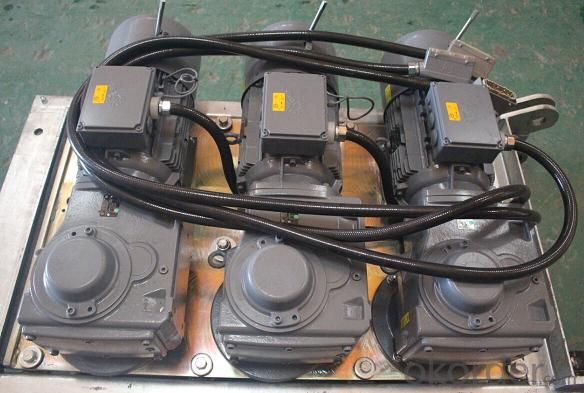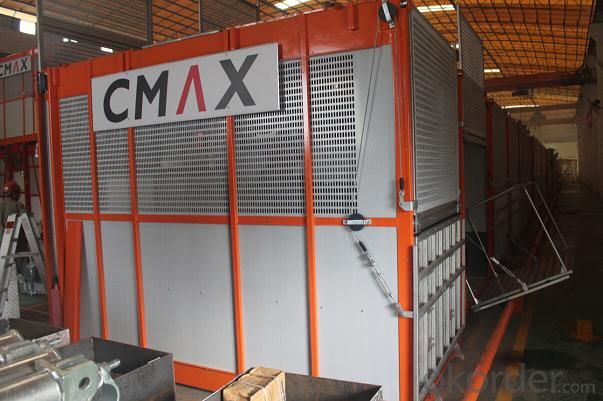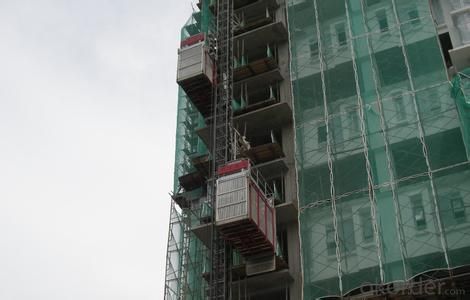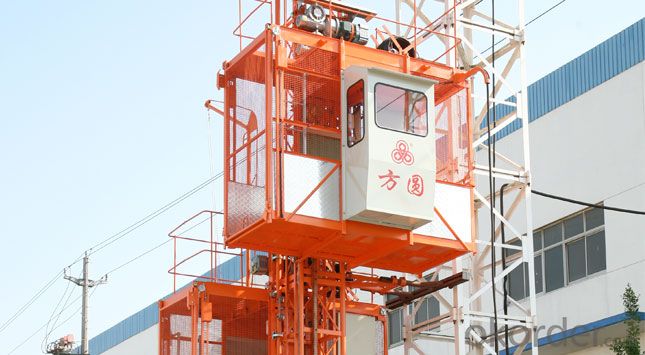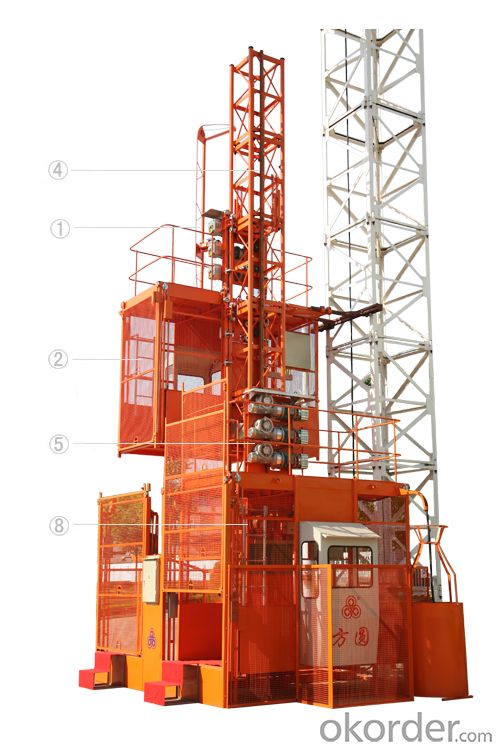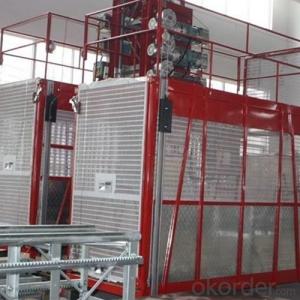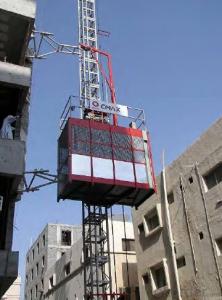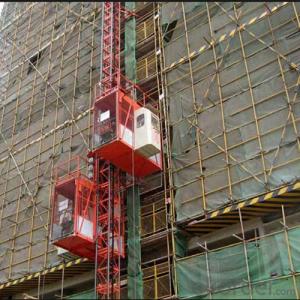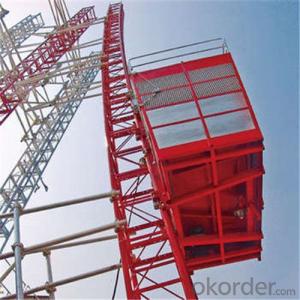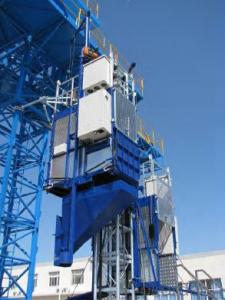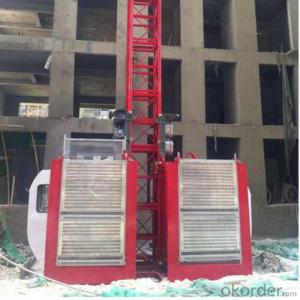Building Hoist SCD200/200B with 2 Tons Capatcity
- Loading Port:
- Qingdao
- Payment Terms:
- TT or LC
- Min Order Qty:
- -
- Supply Capability:
- 15 unit/month
OKorder Service Pledge
OKorder Financial Service
You Might Also Like
Building Hoist Description
The construction hoist product produced by Fangyuan has achieved internationally advanced level in terms of industrial design, control and the drive performance, as well as the operation safety and comfortableness. And Fangyuan is also making efforts to keep improving the product, as what the construction hoist lifts is not only people and material, but also a kind of social responsibility and service concept…
The new generation SC series of construction hoists adopt modular structure, ergonomic design and advanced manufacturing technology, thus the adaptability and reliability of the product is greatly improved, e.g. the max. lifting height can reach 300 meters. The product adopts multiple patented technologies, reaches advanced level in China, and the market share in domestic market is increasing year by year. The product has also been exported to overseas countries like Russia, Turkmenstan, Vietnam, etc. winning the confidence of customers of both home and abroad.
Building Hoist Features
1. The cage drive system is equipped with buffering device, so the cage moves more stable.
2. The ergonomically designed cage interior improves comfortableness.
3. The unique structural design has applied for patent.
4. The typical technologies ensure the malposition difference of the guide rail.
5. The excellent parts in the industry ensures reliable quality of the machine.
6. Precise assembly and accurate drive.
7. Professional solutions for special projects.
8. The complete safety devices ensures reliable control system.
Specifications
SC series product also has special design, such as reinforced guide rail with cross-section of 800mm, inclined type, special for cooling tower, etc. All the double cage construction elevator can be changed into single cage type, such as SCD200.
Model | SC200/200 | SC200/200BP | SCD200/200 | SC200/200B | ||
Configuration | Standard type | Frequency conversion | Counterweight type | Export type | ||
Rated load | kg | 2000/2000 | 2000/2000 | 2000/2000 | 2000/2000 | |
Cage size L×W×H | m | 3×1.3×2.2 | 3×1.3×2.2 | 3×1.3×2.2 | 3×1.3×2.2 | |
Passengers | 16/16 | 16/16 | 16/16 | 16/16 | ||
Max.lifting height | m | 150 | 300 | 150 | 150 | |
Max.height of free end | m | 9 | 9 | 9 | 9 | |
Lifting speed | m/min | 33 | 0~60 | 33 | 33 | |
Capacity of small hoist | kg | 200 | 200 | 200 | 200 | |
Std.section L×W×H | mm | 650×650×1508 | ||||
Electric motor | Type | Disc brake electic motor | ||||
Power | kW | 11×3/11×3 | 11×3/11×3 | 11×2/11×2 | 11×3/11×3 | |
Speed limiter | Action speed | m/s | 1.2 | 1.45 | 1.2 | 1.2 |
Rated brake load | kN | 40 | 40 | 30 | 40 | |
Model | SCD200/200B | SC100/100 | SCD200 | ||
Configuration | Counterweight type | No counterweight | Counterweight type | ||
Rated load | kg | 2000/2000 | 1000/1000 | 2000 | |
Cage size L×W×H | m | 3×1.3×2.2 | 3×1.3×2.2 | 3×1.3×2.2 | |
Passengers | 16/16 | 12/12 | 16 | ||
Max.lifting height | m | 150 | 150 | 150 | |
Max.height of free end | m | 9 | 9 | 9 | |
Lifting speed | m/min | 33 | 33 | 33 | |
Capacity of small hoist | kg | 200 | 200 | 200 | |
Std.section L×W×H | mm | 650×650×1508 | |||
Electric motor | Type | Disc brake electic motor | |||
Power | kW | 11×2/11×2 | 11×2/11×2 | 11×2 | |
Speed limiter | Action speed | m/s | 1.2 | 1.2 | 1.2 |
Rated brake load | kN | 30 | 30 | 30 | |
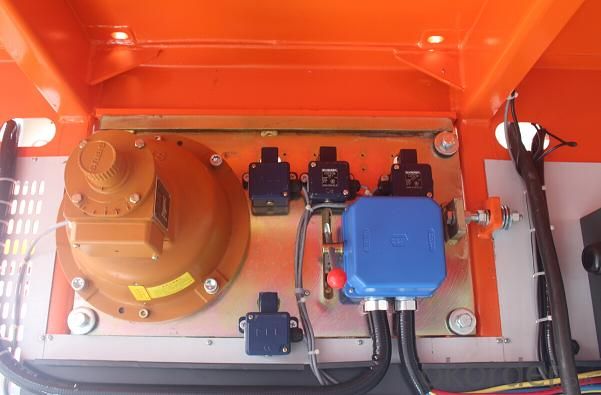
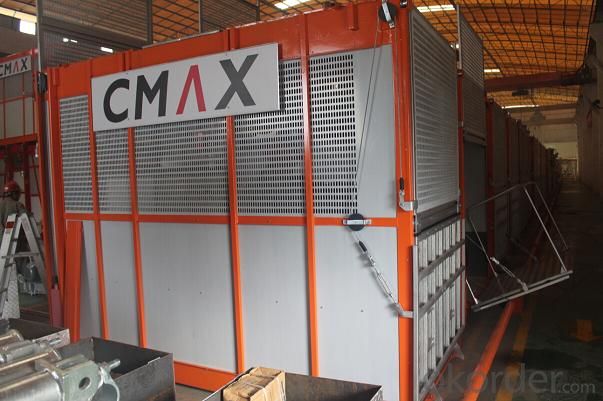
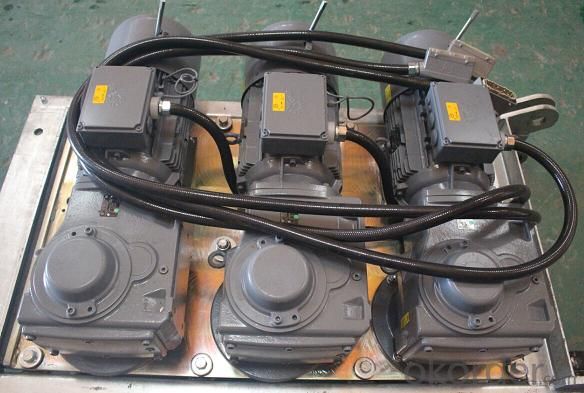
FAQ of Construction Hoist
Q: What is the building hoist main purpose?
A: Building hoist equipped with double or single cabin to transport the materials and labors up and down. It's the ideal
construction equipment for vertical transportation in the field of construction.
Q: What is the main structure of building hoist?
A: The P/M construction hoist mainly contains metal structure, driving system, electrical control system, cable guide &
protection system, electrical top crane and safety device.
Q: What is the meaning of the building hoist’s code?
A: Take SC200/200 for example: “SC” stands for rack and pinion hoist, “200/200” stands for double cage and capacity
is 2 tons per cage. “SC200” stands for single cage and capacity is 2 tons.
- Q: What are the requirements for the construction elevator
- Actually good or bad for safety device can only judge by test and inspection in the daily operation is not sure whether it is good or bad, for those who are serving for safety device, or advice for the earlier inspection and regular test, only accomplish know fairly well, to malignant accident prevention rather than cure.
- Q: This question asks for a list of various types of lifting equipment commonly used in the construction industry.
- <p>In construction, various types of lifting equipment are utilized to move heavy materials and structures. These include cranes such as tower cranes, mobile cranes, and crawler cranes, which are versatile and can lift heavy loads to significant heights. Forklifts are used for lifting and moving materials over short distances. Telescopic handlers, also known as cherry pickers, provide both lifting and access capabilities. Hoists are used for lifting smaller loads and are often found in workshops or on construction sites. Derricks are fixed structures used for lifting heavy loads in a specific area. Lifting slings and shackles are used in conjunction with cranes and hoists to secure loads. Finally, aerial work platforms, like scissor lifts and boom lifts, provide elevated access for workers and materials. Each type of lifting equipment serves a specific purpose and is chosen based on the nature of the construction project and the weight and size of the loads to be moved.</p>
- Q: This question asks for the different types of lifting equipment that can be compatible with a building hoist.
- <p>Building hoists are commonly used in construction projects to lift materials and personnel. Compatible lifting equipment includes various types of hooks, slings, and shackles for securing loads; lifting beams for heavier or bulkier items; and specialized attachments like pallet forks for moving palletized loads. It's crucial to use lifting equipment that is rated for the weight of the load and compatible with the hoist's specifications to ensure safety and efficiency.</p>
- Q: Is it possible to use a lifting device to assist in lifting a person who is too heavy to lift manually?
- <p>Yes, lifting devices such as hoists or mechanical lifts can be used to safely lift someone who is too heavy to lift manually. These devices are designed to support the weight and reduce the risk of injury to both the person being lifted and the caregiver. It's important to use the appropriate equipment for the individual's weight and to follow safety guidelines and manufacturer's instructions to ensure proper and secure lifting.</p>
- Q: Is it possible to use a building hoist to lift objects that are too large to pass through a standard doorway?
- <p>Yes, a building hoist can be used for lifting objects that are too large to fit through a doorway. Building hoists are designed to handle heavy and oversized items, lifting them vertically through small openings or directly from the ground to higher floors. They are particularly useful in construction projects where large materials or equipment need to be moved to upper levels of a building. However, it's important to ensure the hoist is properly installed and operated by trained personnel to maintain safety and avoid damage to the building or the items being lifted.</p>
- Q: This question asks for criteria or factors to consider when selecting the appropriate type of building hoist for a specific construction project.
- <p>Choosing a suitable type of building hoist involves considering several factors: the weight and size of materials to be lifted, the frequency of hoisting, the height of the building, and safety requirements. Assess the load capacity needed, as hoists vary in their lifting capabilities. Consider the hoist's speed and efficiency to ensure it meets the project's timeline. The hoist's size and maneuverability are crucial for fitting within the construction space. Safety features and certifications should be verified to ensure compliance with industry standards. Consulting with hoist manufacturers or rental companies can provide insights into the most suitable hoist for your specific application.</p>
- Q: Describe the process of utilizing a computer control system for operating a building hoist.
- <p>To use a computer control system for a building hoist, first ensure the system is properly installed and integrated with the hoist's mechanical and electrical components. Begin by powering on the control system and checking for any error messages that might indicate a problem. Once the system is ready, input the desired parameters such as load weight, lifting height, and speed settings. Use the control panel to initiate the hoist's movement, monitoring the progress on the system's display. Adjust the hoist's operation in real-time as needed, ensuring safety protocols are followed. Regularly check system diagnostics for maintenance alerts and address any issues promptly to maintain optimal performance.</p>
- Q: What is the need for the sc200/200 construction elevator cable?
- The company now USES 3X25 + 2x10 cables
- Q: Explain the key differences between electric and pneumatic lifting equipment in a few sentences.
- <p>Electric lifting equipment is powered by electricity and offers precise control, high efficiency, and is suitable for heavy-duty applications. Pneumatic lifting equipment, on the other hand, is powered by compressed air and is known for its simplicity, safety, and lower cost. It is often used in environments where electrical equipment might be hazardous, such as in the presence of flammable gases or dust. Electric systems can handle heavier loads and provide more precise control, while pneumatic systems are more resistant to overload and offer a fail-safe mechanism in case of air pressure loss.</p>
- Q: Is it possible to replace an electric motor with a hydraulic cylinder in an electric-hydraulic lifting system?
- <p>No, a hydraulic cylinder cannot be used in place of a motor in an electric-hydraulic lifting system. A hydraulic cylinder is a component that converts hydraulic pressure into linear motion, while an electric motor converts electrical energy into mechanical energy. In an electric-hydraulic system, the motor drives a hydraulic pump, which generates the pressure needed to actuate the cylinder. The motor is essential for providing the power source, and the cylinder is the actuator that uses this power to perform work. Replacing the motor with a cylinder would result in a system without a power source, rendering it inoperative.</p>
Send your message to us
Building Hoist SCD200/200B with 2 Tons Capatcity
- Loading Port:
- Qingdao
- Payment Terms:
- TT or LC
- Min Order Qty:
- -
- Supply Capability:
- 15 unit/month
OKorder Service Pledge
OKorder Financial Service
Similar products
Hot products
Hot Searches
Related keywords
